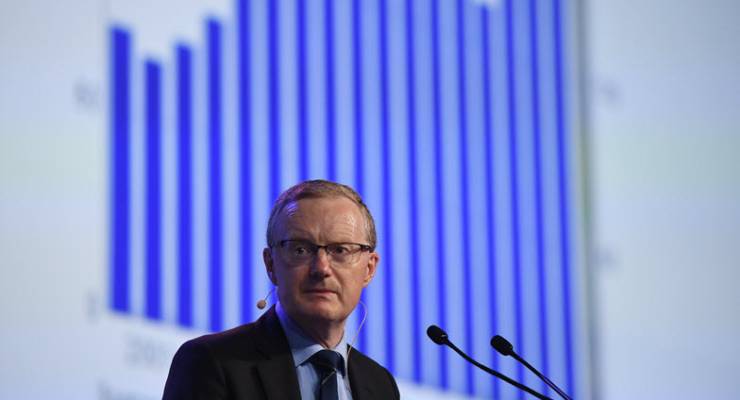
Despite effecting a monetary policy revolution over the course of 2020, the Reserve Bank still has more to come on November 3 when the RBA board next meets. The 2.30pm announcement by governor Philip Lowe will likely outline a series of measures that take Australia further into an entirely new monetary world.
We already know the outline of the measures from last week’s speech on the economy by Lowe, the RBA’s recent second Stability Review of the year and this week’s minutes from the RBA’s October 6.
Firstly, the cash rate will be cut to 0.10%. The Bank’s three-year bond rate target will also be lowered to 0.10%, and the bank will make clear it will continue to buy sufficient bonds to drive the key rate to that level and hold it there.
Lowe now argues that cutting interest rates again now is more likely to get results than it was back in April and May because the economy is slowly rebounding, rather than earlier in the year when business lockdowns and the closure of state and international borders saw economic activity tank. But interest rates will not go negative, as they are on the verge of doing in NZ.
And many economists believe, after reading the minutes and Lowe’s speech, that the bank will go a lot further and do something that it has ruled out in the past — quantitative easing, although it probably won’t be phrased like that. The yield control measure will be extended to yields on five and 10 year bonds. That will further lower borrowing costs for banks and remove a key source of upward pressure on the Australian dollar.
This will be the most important of the measures, and the most radical in Australian monetary policy terms. It will not only lower borrowing costs but produce a big enough cushion for banks to continue to support under pressure customers — consumers and business.
In light of data this week from the Australian Bureau of Statistics, the bank will have little doubt of the need to act.
The early report on September retail sales from the Australian Bureau of Statistics on Wednesday not only showed a 1.5% quarter-on-quarter drop from August (when sales fell 4.2%) from July, but year-on-year growth fell to 5.2%. — solid, but lower than the 6.9% annual rate in August and the 12.2% in July.
Payroll and jobs also declined over the last two weeks of September. Victoria wasn’t the problem this time — it was NSW, where total wages fell 4.5% compared to a fall of 1.4% in Victoria (and Queensland).
We shouldn’t be too concerned about these volatile numbers, except that they were the second fortnight in a row of declines, and despite the federal government’s enthusiasm for blaming Daniel Andrews for everything, there are problems outside Victoria.









It is morbidly interesting that economic commentary, including this article, assume some inherent capacity of business, as it existed to December 2019, to continue is some sort of familiar way. That must be a delusion. How can any business related to tourism or travel now be viable. Every airline in the world must currently be insolvent – no revenue and lease obligations for its fleet persisting. Cafes and restaurants cannot be viable. Few were booming cash cows before the pandemic. Who will mad enough to develop a residential tower, an office building or retail facilities in the next 2-3 years. That will gut the construction industry.
In short, we a facing an approaching tsunami of business failures. That will make banks’ loan ‘assets’ a blood bath and all of our much vaunted major bank stability may see one or more of them fail.
I doubt any of this reality can be rationalised away with economic jargon, graphs and all the other smoke and mirror tricks of the dismal science. The real economy is going to assert its ugly realities and even Wall Street spivs are going to feel the pain this time. Regrettably, this may be the lesson we need while we get on with the insanity of deliberately increasing our emissions for absolutely no economic benefit.
Agree – Why some boffins are giving banks the ‘ability’ to lend is beyond me, just give people money.
Who is going to borrow to invest in a business right now?